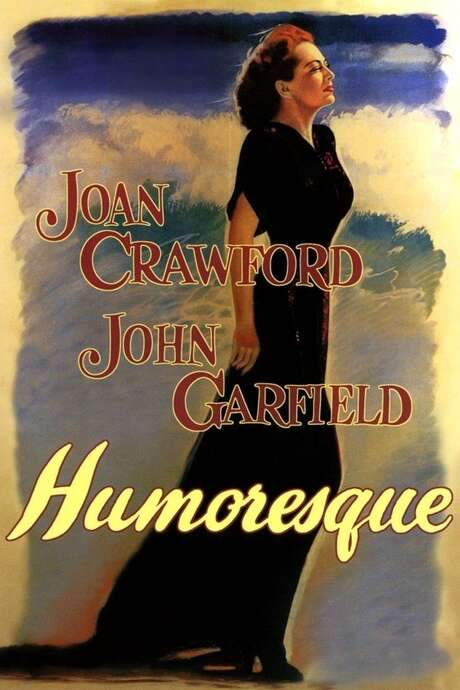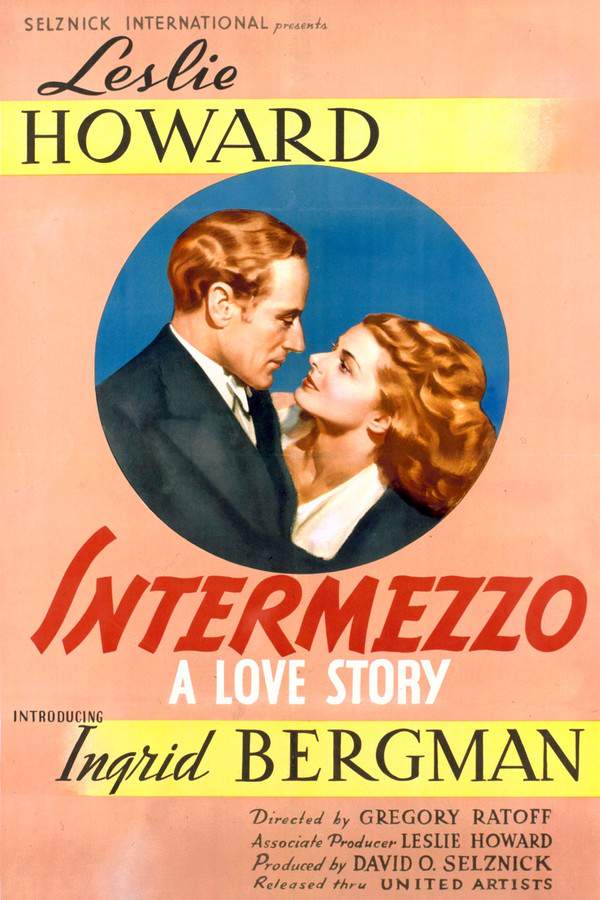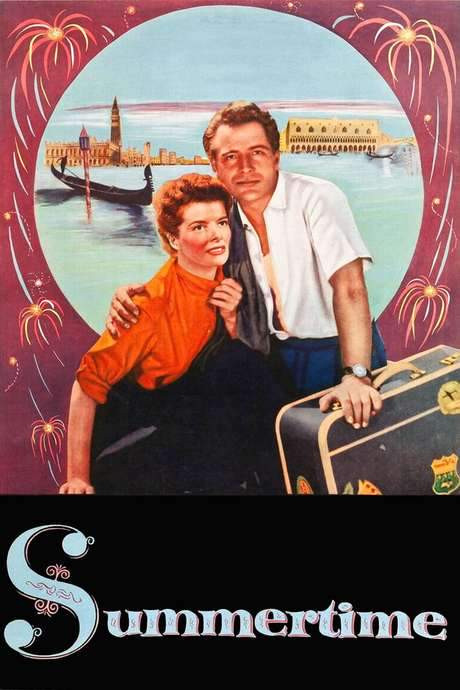
Humoresque
Year: 1946
Runtime: 125 mins
Language: English
Director: Jean Negulesco
TWO WHO MET AND KISSED AND NEVER SHOULD HAVE MET AGAIN! A classical musician from a working class background is sidetracked by his love for a wealthy, neurotic socialite.
Warning: spoilers below!
Haven’t seen Humoresque yet? This summary contains major spoilers. Bookmark the page, watch the movie, and come back for the full breakdown. If you're ready, scroll on and relive the story!
Humoresque (1946) – Full Plot Summary & Ending Explained
Read the complete plot breakdown of Humoresque (1946), including all key story events, major twists, and the ending explained in detail. Discover what really happened—and what it all means.
In New York City, a performance by noted violinist Paul Boray is cancelled, leaving him in a deep emotional trough. His manager, Bauer, is furious, arguing that Paul has misunderstood what performing should feel like and suggesting that music may no longer be part of his life. Paul’s more sympathetic accompanist and friend, Sid Jeffers, asks Bauer to step back, and Paul confesses to him that he has always wanted to do the right thing, yet he has long felt he is on the outside, looking in, and cannot get back to that happy kid he once was.
“on the outside, looking in,” and cannot “get back to that happy kid” he once was.
The story then shifts to a warm memory of his early years. As a boy, Paul wanders into a local variety store to pick a birthday gift and chooses a violin, a choice his father dismisses—partly because the instrument is costly, partly because he suspects it’s just a passing fancy. Esther Boray, his loving mother, buys the modest $8 violin for him, setting the stage for a rapid ascent from hesitant beginner to a gifted young violinist. By 1930, a tense household faces financial strain as Paul overhears his father and his brother discussing money, and he resolves to strike out on his own rather than depend on his family. He lands a job with a locally broadcast orchestra, where he works with Sid Jeffers, the pianist, and begins to build his reputation through steady, disciplined practice and performance.
At a glittering party hosted by Helen Wright, a society hostess who is married to a much older, ineffectual husband, Paul encounters a woman who embodies independence, sensuality, and a willingness to manipulate men for her own ends. Helen is initially brusque and challenging, baffled by Paul’s stubborn integrity, but she is also drawn to his talent and presence. She sends him a gold cigarette case with an apologetic note the next day, and through her connections, she helps him secure a manager, moving Paul into a new orbit. He falls in love with Helen, and the relationship quickly becomes a central force in his life.
On the beach near the Wrights’ Long Island home, Paul reaches out to Helen after a swim, only for her to run away; later, she suffers a fall from a horse, and when he rushes to help, she resists being touched. Her inner conflict begins to reveal itself as she is torn between fear and desire. After a charged moment, she admits she cannot fight him any longer and confesses that she is in love with him. Meanwhile, Esther confronts Paul about missing a date with Gina Romney, his long-time sweetheart, and warns him to consider his future. After Paul’s debut concert, he encounters a skeptical Victor Wright, who dismisses him as a “savage” in his private conversation, hinting at the social resistance Paul faces.
Paul’s career progresses through a several-month American tour, and a lunch with Gina Romney becomes a pivotal scene. Sid arrives with Helen, who becomes consumed by jealousy and flees the moment Paul reconnects with Gina. Paul follows Helen to Teddy’s Bar, where she makes a dramatic scene by smashing her drink against a wall. They later go to her home, where she pleads to be admitted into his life, arguing that life with him is worth the risk. Paul remains steadfast in his love for her, yet the relationship strains every other connection he holds.
Back at his new apartment, Paul displays a wall of photographs of Helen and tells his mother the truth of his love. The emotional tension explodes into a quarrel, and Esther slaps him in a moment of heated concern. Rumors begin to swirl about Helen’s true intentions, and Victor challenges whether Helen can truly reform and be happy with Paul. Helen insists that this is the first time she has known real love.
During a rehearsal, Paul receives a note from Helen claiming good news and asking him to come immediately. He crumples the note and continues with the rehearsal of the Carmen Fantasie, a piece adapted for the film by Franz Waxman from Bizet’s Carmen. Later, at Teddy’s Bar, Helen becomes increasingly intoxicated and cannot tolerate the house pianist’s rendition of “Embraceable You.” Paul arrives to escort her home, reiterating his wish to marry her, while she resists his overtures and clings to the hope that their life together could change.
She makes a visit to Esther to prove that she truly loves Paul, but Esther remains unconvinced and tells her to leave Paul alone. Neither Helen nor Esther attends Boray’s next concert, where he performs a transcription of Wagner’s Liebestod—an intimate, emotionally charged centerpiece of the program. Helen, listening to the broadcast, drinks again and comes to realize the ruin her path has caused. She walks along the shore into the ocean and dies, leaving Paul distraught yet sustained by the unwavering loyalty of Sid Jeffers.
In the film’s opening frame, Paul seeks reassurance from Jeffers that he is not running away from his responsibilities. The closing scene finds him walking down a street toward his family’s grocery store, carrying the weight of his experiences with a quiet strength and unresolved courage.
[Esther Boray], [Paul Boray], [Bauer], [Sid Jeffers], [Helen Wright], [Gina Romney], [Victor Wright], and [Gina Romney] appear as central figures in this dramatic arc, each shaping the trajectory of Paul’s aspirations, loves, and the ultimate price of ambition. The film blends intimate family dynamics with a rising star’s public triumph, balancing tenderness, pride, and tragedy in a way that remains memorable for its emotionally charged performances and its exploration of art, desire, and resilience.
Last Updated: October 09, 2025 at 11:06
Unlock the Full Story of Humoresque
Don't stop at just watching — explore Humoresque in full detail. From the complete plot summary and scene-by-scene timeline to character breakdowns, thematic analysis, and a deep dive into the ending — every page helps you truly understand what Humoresque is all about. Plus, discover what's next after the movie.
Humoresque Timeline
Track the full timeline of Humoresque with every major event arranged chronologically. Perfect for decoding non-linear storytelling, flashbacks, or parallel narratives with a clear scene-by-scene breakdown.

Similar Movies to Humoresque
Discover movies like Humoresque that share similar genres, themes, and storytelling elements. Whether you’re drawn to the atmosphere, character arcs, or plot structure, these curated recommendations will help you explore more films you’ll love.
Explore More About Movie Humoresque
Humoresque (1946) Scene-by-Scene Movie Timeline
Humoresque (1946) Movie Characters, Themes & Settings
Humoresque (1946) Spoiler-Free Summary & Key Flow
Movies Like Humoresque – Similar Titles You’ll Enjoy
Hum Tum (2004) Plot Summary & Ending Explained
Interlude (1968) Spoiler-Packed Plot Recap
From the Terrace (1960) Story Summary & Characters
Intermezzo: A Love Story (1939) Story Summary & Characters
Two for the Seesaw (1962) Movie Recap & Themes
Smiles of a Summer Night (1955) Story Summary & Characters
Summertime (1955) Complete Plot Breakdown
When Tomorrow Comes (1939) Ending Explained & Film Insights
Song of Love (1947) Detailed Story Recap
Old Acquaintance (1943) Film Overview & Timeline
The Passionate Friends (1949) Film Overview & Timeline
Conversation Piece (1974) Ending Explained & Film Insights
Strangers When We Meet (1960) Full Summary & Key Details
A Heart in Winter (1992) Detailed Story Recap
Do You Like Brahms? (1000) Ending Explained & Film Insights

















